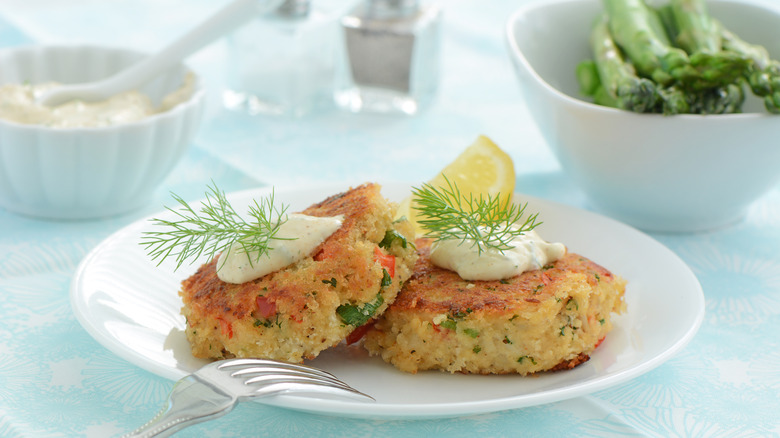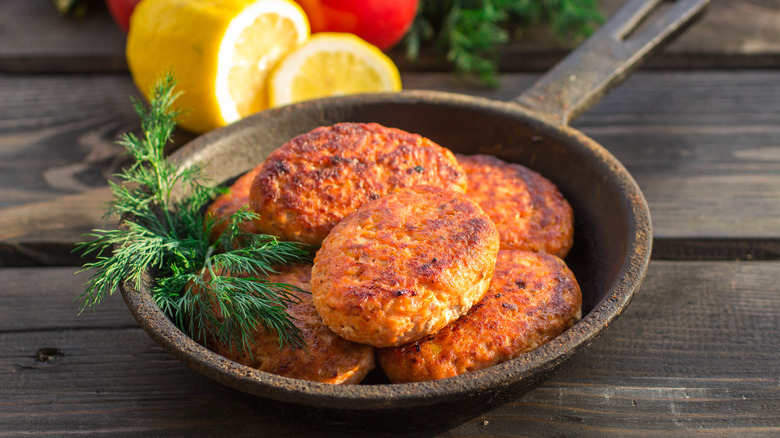The Best Type Of Fish To Use For Fish Cakes
Carol Kendall, the famous author of many well-known children's books, once said that "trout made into fish cakes is still trout." With a crispy outside and a buttery-chunky inside, fish cakes are a delicious treat that can use, and sometimes disguise, nearly any type of fish. In 19th century England, people were already cleverly making fish cakes by using whatever leftover potatoes and fish they had as their ingredients. However, if you dig a little deeper, the history goes much further back. According to an old Chinese folk tale, nearly 4,000 years ago a fisherman helped cure the poor appetites of Emperor Shun's wives, and as a result, fish cakes became a popular meal in China.
It seems nearly every country has its own history and style when it comes to fish cakes, but all versions either make a tasty treat out of leftovers or make less fish go farther. While your guests might not be thrilled to eat yesterday's piece of white fish, they will have a different reaction when served these crusty delights, which can be infused with mouthwatering spices and tartar sauce. In addition, their versatility pairs well with various side dishes like corn pudding, creamed spinach, mac and cheese, or even good ol' french fries!
From the most popular to the lesser-known types of fish, we have plenty of options to use for our fish cakes but some are clear winners.
Texture is key
Chefs and fanatics will tell you that the cooking technique is most important when making fish cakes. People use all types of fish — mostly white — combined with potatoes or other starches to produce the ideal texture for a fish cake, with a crispy outside and a soft-chunky inside. The consistency of the fish itself is paramount and while you can use any type of firm white fish — like cod, tilapia, haddock, Alaskan pollock, or catfish — just make sure that when baking or pan-searing, the fish will flake into chunks. It is best to avoid using fatty fish as it has a tendency of being too soft and therefore could easily crumble.
To avoid an overly fishy taste that can come from fish like sardines or mackerel, it is better not to have this strong flavor dominate the fish cake. Good news for salmon lovers: While not necessarily in line with tradition, fresh salmon can make for truly delectable fish cakes. To save a little money, canned tuna or salmon can do the trick, but buy the ones packed in brine rather than oil, and again, better in firmer chunks.
Despite its humble beginnings, you can find fish cakes in top-notch seafood restaurants that use fancier ingredients like crabmeat (crab cakes) or even smoked fish. Regardless of what fish you choose, remember it is often the texture that makes it so tasty and appealing, along with simple enhancements like a glop of mayonnaise!

